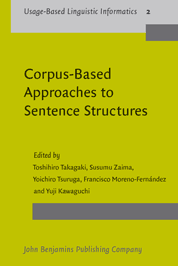
Japanese Esperanto Korean Korean: new Fine Art
The Yale romanization system is used in transcribing Korean (Hankul).
=================================================
PAPERS
(See
Japanese version)
Noma(1988) "Hakeyssta": A Study of Mood Forms in Modern Korean
Noma(1990a) "Halkesita": A Further Study on Mood Forms in Modern Korean
download:
pdf file 2.72MB (Japanese)
Noma(1990b) The Classification of Nouns in Modern Korean
Noma(1990c) Onomatopoeia in the Modern Korean Language
download:
pdf file 947 KB
(Japanese)
Noma(1993a) Syntax: accusative and verb in Korean
download:
pdf file 4.69 MB (Japanese)
Noma(1993b) On the Converbal Ending "-taka" in Modern Korean: Aspect, Taxis
and Verb Classification
Noma(1994) Methodology of Word Classification in Korean
Noma(1996a) Appropriate Materials for Korean Language Learning in the Case
of Learners with Japanese as L1.
see
HTML (Korean)
Noma(1996b) The hierarchy of sentences in the Korean language
download: pdf file 4.42MB
(Korean)
Noma(1996c) Speech Levels in Contemporary Korean
Noma(1996d) Studies of Korean grammar and lexicology in Japan since 1980:
Development of Linguistic-factism
Noma(1997a) The Structure of the Adnominal Clause in Korean and Japanese
Noma(1997b) On the Structure of Sentences in Korean
Noma(2002b) For the Development of the Word-Combination (or slovosochetanie) Theory in Korean
download: pdf file 1.18 MB (Korean)
Noma(2003) Korean Language Education in Japanese Graduate Schools download: pdf file 854KB (Korean)
Noma(2005b) When Words Form Sentences; Linguistic Field Theory: From Morphology through Morpho-Syntax to Supra-Morpho-Syntax. "Corpus-Based Approaches to Sentence Structures." Usage-Based Linguistic Informatics 2. Edited by Toshihiro Takagaki, Susumu Zaima, Yoichiro Tsuruga, Francisco Moreno-Fernández and Yuji Kawaguchi . pp.51-75. John Benjamins. 90 272 3314 4.
Noma (2005c) Contemporary Korean Grammar Studies in Korea and Japan. "Nihongogaku (Japanese Linguistics)" July, 2005. vol.24. no.8. pp.16-31. Tokyo: Meijshoin
Noma, H. & Nakajima, H. (2005d) The History of Korean Language Teaching in Japan. 'irbon'e hangug'e gio'iug' "hangug'e gio'iugron 3" (Korean Language Education 3). gugjeihangug'egio'iughaghoi (ed.) pp.195-221. Seoul: Hangugmunhoasa
Noma, H. & Nakajima, H. (2005e) Materials used in Japan over the last 100 years for Teaching Korean. ?e'irbon'e hangug'e giojei' "hangug'e gio'iugron 1" (Korean Language Education 1). gugjeihangug'egio'iughaghoi (ed.)?Dpp.263-298. Seoul: Hangugmunhoasa
Noma (2006a) 'dan'ega munjang'i doir ddai: 'en'ejang 'iron -- hiengtairon'eise tongsaron'yro, gyrigo cohiengtaitongsaron'yro. "Whither Morphology in the New Millennium? 21seigi hiengtairon 'ediro ganynga" pp.89-121. Youn-Kun Ko, et al. (ed.) Seoul: Pagijong Press. April 25, 2006.
Noma (2006b) 'hiendaihangug'e 'iong'en'yi bunsegjeg'in hiengtai'ei daihaie' (On analytic forms in Korean.) "Whither Morphology in the New Millennium? 21seigi hiengtairon 'ediro ganynga" pp.297-318. Youn-Kun Ko, et al. (ed.) Seoul: Pagijong Press. April 25, 2006.
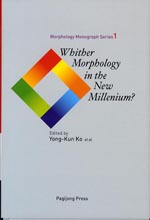
Noma, H. & Kim Jina(2006) 'The Televised "Korean Course" Program on the Japanese Public Broadcasting Station NHK.' "Journal of Korean Language Education" 17-2. pp.95-134. Seoul: The International Association for Korean Language Education.
Noma(2005a)'Korean' Encyclopedia of Linguistics. Ed. Philipp Strazny. New York: Fitzroy Dearborn, 2005. 2 volumes. (ISBN: 1-57958-391-1.)
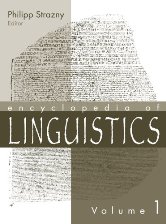
Noma
(2006c)'Politeness Marker -yo/-iyo in the Korean Language' Chosen Gakuho.
199-200. pp.37-81. Tenri: The Academic Association of Koreanology in Japan
(Chosen Gakkai).
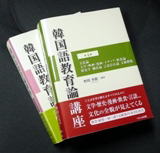
Noma (1999) Kurasi-no Tangosyuu Kankokugo (Korean Basic Vocabulary)
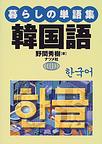
Noma (2000;2002) Sihuku-no Tyoosengo ("felicity" Korean: Korean textbook)

Noma (2002a) Hankuke Ehuywa Munpepuy Sangkwankujo (Korean: Correlative Construction of Vocabulary and Grammar), Thaehaksa ISBN 89-7626-742-7

Noma Hideki, Murata Hiroshi, & Kim Jina(2004a) Puti Kankokugo ("Petit" Korean), Asahi Syuppansya
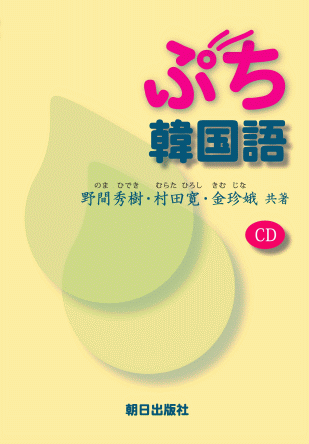
Noma & Kim Jina (2004b) Viva! Tyuukyuu Kankokugo ("Viva!" Korean), Asahi Syuppansya

Noma (2007) Zetumyoono Hanguel, NHK pub.
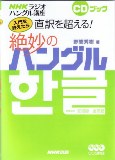
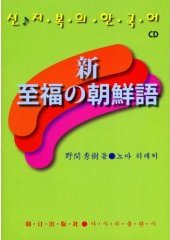
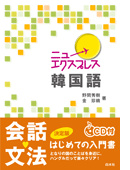
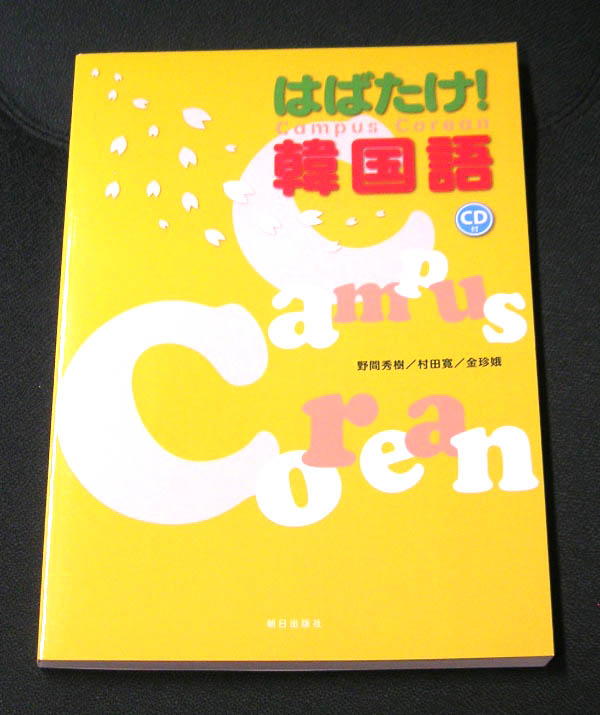
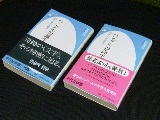

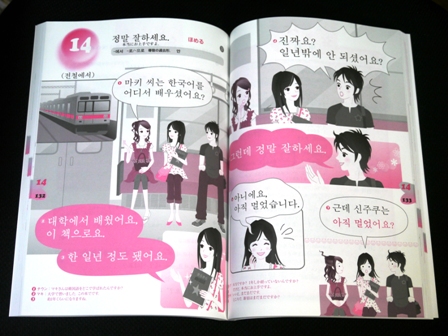
=================================================
NOMA Hideki (1988) ------------------------------
"Hakeyssta": A Study of Mood Forms
in Modern Korean
Oct. 1988, "Chosen Gakuho" (Journal
of the Academic Association of Koreanology in Japan), No. 129, pp.1-73 (Written
in Japanese)
This paper is a study of the meanings and uses of the
"hakeyssta" form
in Modern Korean. The term "hakeyssta" form indicates all forms that include
a verb or an adjective followed by the suffix "-keyss-".
There are several basic premises to this study: first of all, a sentence
consists of 1) a proposition, in which a matter is set forth, and 2) modality,
through which the speaker's attitude is expressed. Secondly, both modality
and mood serve the function of expressing the speaker's attitude. However,
modality is related to the sentence as a whole, while mood is related to the
predicate. In this sense, they fall into separate grammatical categories,
and so must be distinguished from one another. Thirdly, modality, as it expresses
the speaker's attitude, can be divided into two varieties: matter-oriented
modality and hearer-oriented modality.
To begin with, this study throws light on a contradiction which emerged
in preceding studies and might be termed the will-conjecture controversy.
Following this, we examine the meanings of the "hakeyssta" form. The
"hakeyssta"
form of verbs tends to give a meaning of "to be about to do", while the
"hakeyssta"
form of adjectioves tends to mean "it is likely to be so".
What meaning the "hakeyssta" form brings to a sentence depends upon
the following: whether the word employing the "hakeyssta" form is a verb
or an adjective; the lexical meaning of the verb or adjective; whether the
sentence is interrogative or not; whether the "haysskeyssta" form is used
or not; and whether or not the subject is the speaker. In a word, the "hakeyssta"
form derives different meanings depending upon the matter which the sentence
is discussing.
"Hakeyssta" is a mood form which expresses the speaker's subjective judgement about an impending situation, and indicated the speaker's interest
in the scene on which he is commenting.
"Hakeyssta" might be called judgement-of-imminency, in other words,
judgement that the matter is about to be thus, while "hanta" could be called
declaration-of-occurrence, a declaration that the matter is already thus,
and "halkesida" is conjecture-of-probability, or a conjecture that perhaps
the matter will be thus.
These forms are opposed to one another in mood; however, the
"hakeyssta"
form becomes aspectural to a certain extent when applied to a verb rather
than an adjective.
NOMA Hideki (1990a) -----------------------------
"Halkesita": A Further Study on Mood
Forms in Modern Korean
Jan. 1990, "Chosen Gakuho" (Journal
of the Academic Association of Koreanology in Japan), No.134, pp.1-64 (Written
in Japanese) download:
pdf file 2.72MB (Japanese)
This paper is a study of the meaning and used of the "halkesita" form
in Modern Korean. It is also a continuation of Noma's earlier study "Hakeyssta":
A Study on Mood Forms in Modern Korean" (1988).
In this study, we focus on the analysis of many actual contexts in which
the "halkesita" form appears.
We conclude that "halkesita" can be defined as conjecture-of-probability
as opposed in mood to "hakeyssta", which reflects judgement-of-imminency
and also as opposed to "hanta", which reflects declaration-of-occurrence.
NOMA Hideki (1990b) -----------------------------
The Classification of Nouns in Modern
Korean: Clarifying Korean Lexicology and Grammar
April 1990, "Chosen Gakuho" (Journal
of the Academic Association of Koreanology in Japan), No.135, pp.1-59 (Written
in Japanese)
The aim of this paper is to discuss the lexico-grammatical classification
of nouns in Modern Korean.
Korean nouns are classified mainly by the following two conditions:
1) By the kind of accompanying case-endings and/or suffixes
2) By the kind of counters (classifiers) that are used
We consider the study of classification to be essential to establish the
Korean lexicology, to clarify Korean grammar and to elucidate how a word can
have its own meaning.
NOMA Hideki (1990c) -----------------------------
Onomatopoeia in the Modern Korean
Language
"Bulletin of the Language Institute
of Gakushuin University" No.13, pp.24-47 (Written in Japanese)
There are about 4000-8000 onomatopoetic words in the Modern Korean
language. This paper discusses characteristics of onomatopoetic sound and
syllabic structure of onomatopoetic words with special reference to patterns
of reduplication.
What we call in this study the "Law of Final Consonants" of onomatopoeia
in Korean language can be expressed in the two following tendencies:
1) The frequency of use of final consonants increases by degrees in order
to point of articulation (front to back). The order from least to most frequent
is:
[p] [m] < [t] [n] < [l] < [k] [ng]
2) The order of consonants ending a syllable in words 2 or more syllables
follows the above front to back pattern of points of articulation.
NOMA Hideki (1993a) --------------------------------
Syntax: accuative and verb in Korean
"Gengo Kenkyu 3", The Institute of
Language Research, Tokyo University of Foreign Studies, No.3, 1993 (Written
in Japanese). * Korean version was presented in Kwuko Hakhoy (The Society
of Korean Linguistics, Korea), 1993, Korea)
download:
pdf file 4.69 MB
The purpose of this paper is to analyze the Korean sentences which include an accusative marker -lul/-ul from the viewpoint of word-combination and syntax. This study surveys qualitatively and quantitatively 3044 examples which are collected from novel and essay texts focusing on the following points: (1) The problems of subjects. Distinguishing between subjects as linguistic realization and as extra-linguistic existence is extremely important. In the former, it is a component of a sentence. Is the subject explicit in the sentence? Where is the position of the subject as a component of the sentence? Is the noun which is the subject animate or inanimate? What is the marker of the subject, -nun/-un or -ka/-i? (2) The problems of accusative nouns. What kind of nouns are accusative nouns? What is the frequency of accusative nouns? Are there any modifiers of the accusative noun? (3) The problems of the verbs which govern an accusative. What kind of verbs appear in accusative-governed construction? What are the sentences with an accusative and without a predicate like? (4) The problems of elements between an accusative and a verb. What sort of syntactic elements most frequently appear? (5) The problems of co-occurrence of an accusative case and other cases. What is the relationship between the case and the category of the accusative noun? What is a sentence which does not include other cases like? This paper also tries to classify the word-combination of an accusative noun and transitive verb. The transitive verb word-combinations are divided into the following five major categories:
1) Action Toward the Objective Target
<mun-ul yel-ta> <apeci-lul tep-ta> <phenci-lul ponae-ta>
(open the door) (help my father) (send a letter)
2) Internal Subject Effect toward the Objective Target
<pap-ul mek-ta> <yeyki-lul tut-ta> <sasil-ul al-ta> <nampyen-ul sarangha-ta>
(eat food) (listen to somebody) (learn the truth) (love one's husband)
3) Reflexive Effect on the Subject
<os-ul ip-ta> <miso-lul cis-ta> <nun-ul pipi-ta>
(wear clothes) (crack a smile) (rub one's eyes)
4) Effect on the Subject from the Objective Target
<cosa-lul pat-ta> <kapang-ul ppayaski-ta> <walkup-ul tha-ta> <sangche-lul ip-ta>
(be under investigation) (have one's bag stolen) (get paid) (be injured)
5) Association to Conditional Target
<hanul-ul nal-ta> <khephisyop-ul naka-ta> <kil-ul ka-ta>
(fly through the sky) (leave the coffee shop) (go down the road)
NOMA Hideki (1993b) ------------------------------
On the Converbal Ending "-taka" in
Modern Korean: Aspect, Taxis and Verb Classification
Oct. 1993, "Chosen Gakuho" (Journal
of the Academic Association of Koreanology in Japan), No.149, pp.1-62 (Written
in Korean)
The object of this paper is to clarify the use of the converbal ending
"-taka" in Modern Korean, and to investigate the nature of verbs which can
take the "hataka" form. In this study we focus on the problems of aspect,
taxis and verb classification, and present a number of examples of the "hataka"
form, gathered from Korean literature and drama. We also surveyed Korean
native speakers in order to examine their use of the "hataka" form, and include
the resulting information here.
Verbs which take the "hataka" form, that is, "hataka" verbs, are extremely
closely related to "hakoissta" verbs, those which take the "hakoissta" form.
"Hataka" verbs are also related to some extent to "haten" verbs, those
which take the "haten" form.
NOMA Hideki (1994) -------------------------------
Methodology of Word Classification in Korean
"Gengo Kenkyu 4", The Institute of Language Research, Tokyo
University of Foreign Studies, 1994. pp.45-68 (Written in Japanese)
NOMA Hideki (1996a) -------------------------------
Appropriate Materials for Korean Language
Learning in the Case of Learners with Japanese as L1.
"Journal of the Institute of Language
Research", No.1. 1996, The Institute of Language Research, Tokyo University
of Foreign Studies, pp.51-81 (Written in Korean)
NOMA Hideki (1996b) ------------------------------
The hierarchy of sentences in the
Korean language
"Eoneohag (Linguistcs): Journal of
the Linguistic Society of Korea" (ISSN 1225-7494) no.19, December, 1996,
The Linguistic Society of Korea, pp. 133-180 (Written in Korean)
The aim of this paper is to clarify the structure of sentences in Korean.
Chapter 1 describes the methodology of this study -- "linguistic-factism"
-- which is based on analysis of abundant linguistic facts. In concrete
terms, the present research is based on investigation of 13,889 sentences
collected from novels, dramas, broadcast scripts, etc. and linguistic data
collected from native speakers.
In chapter 2, units of language such as text, utterance, sentence, "slovosochetanie"
(word combination), word and morph are surveyed, and modus and modality are
identified as necessary conditions for sentence-formation.
A sentence is seen as consisting of a "proposition" which expresses
the event and "modality" which expresses the subjective attitude of the speaker.
Modality is seen as consisting of "event-oriented modality" which expresses
the speaker's subjective attitude toward the event and "hearer-oriented modality"
which expresses the speaker's subjective attitude toward the hearer.
We can recognize "slovosochetanie" , a combination of words, as a unit
which has the function of naming the matter in the sentence.
In Chapter 3, issues regarding subject and predicate are discussed.
The nucleus of the sentence in Korean is the predicate. A subject and/or
other components of sentences participate in forming sentences when necessary.
The subject and other components except for the predicate are optional.
In this point, Korean differs definitively from languages such as English
and German in which a subject is indispensable in forming a sentence with
a predicate.
Regarding predicates, there are two types of sentence: "predicate sentences",
which are integrated by a predicate, and "non-predicate sentences", which
are not integrated by a predicate.
Chapter 4 deals with the basic notions of sentence and clause. There
are three types of clause: main clause, coordinate clause and subordinate
clause. Subordinate clauses may be divided into adverbial clause, nominal
clause, quoted clause and adnominal clause. An adnominal clause always requires
a noun, and is therefore weak in independence compared with other subordinate
clauses.
Unlike coordinate clauses in English such as the structure "sentence
+ and + sentence", in Korean, only predicate sentences placed in parallel,
i.e. in parataxis, are pure coordinate clauses. Clauses integrated by
"hako"
or "hamye" resemble adverbial clauses which are independent only in their
meaning. The structure of such clauses is "sub-sentence + sentence".
In adnominal clauses only "-ka/-i" is used as subject marker, while
"-nun/-un" is not used in general. However, "-nun/-un" can be used in cases
where the marker expresses comparison or contrast.
The adnominal forms of adjectives contain an opposition of tense, for
example "alumtawu-n kkwum" vs. "alumtawue-ssten kkwum", like adnominal clauses,
and are therefore also seen as a kind of adnominal clause.
There are also expanded clauses which have their structure expanded
by use of adnominal forms or nominal forms of verbs. Many expanded clauses
are grammaticalized as mood forms of verbs.
In Chapter 5, the inner structure of clauses is investigated.
It is noticeable that what kind of elements can be included in subordinate
clauses depends not only on form but also on function and meaning.
"Manner clause", the most small clause, cannot include sentence adverb,
topic word, subject, "obstojachel'stovo" i.e. adverbial of time or place,
negative polarity item, etc. Moreover manner clauses do not have oppositions
of tense, therefore they may be called "pseudoclauses".
Conditional clauses are larger than manner clauses, and can include
subject. And reason clauses, concessive clauses, opposite clauses are even
larger, in this order, and become progressively similar to the structure
of main clauses.
The subcategories of verbs and the categories of "slovosochetanie" function
as factors in determining the inner structure of clauses.
Chapter 6 discusses the hierarchy among clauses. Subordinate clauses
differ according to what kind of subordinate clauses can be included mutually.
For example, manner "hamyense"-clause can include a conditional
"hamyen"-clause,
but the reverse is not true. From this viewpoint, also, manner clause are
the smallest, while opposite clauses are the most similar to main clauses.
The multiple structure of adverbial clauses is as follows:
[ [ [ TV-lul po-myense ] pap-ul mek-u-myen ] kenkang-ey an co-u-nikka
] pap-puthe mek-e-la. ]
[ [ [ manner clause ] conditional clause ] reason clause ] main clause
]
Chapter 7 describes the relationship between the structure of integrating
sentences and mood and modality.
In predicates, not only synthetic forms but also analytic ones such
as "ha-ko iss-ta", "ha-ko siph-ta", "hay-ya toy-ta", etc. are roughly determined
in order of mutual joining and are ranked in a hierarchy.
From the viewpoint of the hierarchy, elements in the hearer-oriented
modality, that is, relatively subjective elements, are ranked at the outside,
that is, in the final part of the sentence, elements in event-oriented modality
are graded in the next position and elements which contain the proposition,
i.e. relatively objective elements, are placed in the innermost position
in the sentence.
In the hierarchy there are various strata. For example, topic words
with "-nun/-un" or adverbs function as markers which indicate where to enter
a specific stratum. The marker indicating entry into a stratum is named "IN-marker",
and the corresponding marker which indicates where to exit from the stratum
is named "OUT-marker". The study of the correspondence between IN-markers
and OUT-markers, such as "ama: hal kesita", "kuttay: hayssta",
"machi: hadus",
etc. is predicted to play an important role in the study of syntax in future.
In conclusion, it is demonstrated that sentences in Korean form a hierarchy
in the structure of proposition and modality.
NOMA Hideki (1996c) ------------------------------
Speech Levels in Contemporary Korean
"Mal: The Journal of Yonsei Language
Center", Vol. 21, December, 1996, The Korean Language Institute, Yonsei
Language Center, Yonsei University, Seoul, Korea. pp.15-54 (Written in Korean)
The purpose of this paper is to describe the speech level of present day Seoul dialect. This study is based on the answers to a questionnaire to 227 Korean native speakers on their language use. From this survey we can find that the use of the Seoul dialect is dramatically changing. The speech level of the Seoul dialect which has divided into 4 – 6 levels, that is hapnita, hayyo; hao, haney; hay, and hanta, in previous studies has been progressing towards the polarization between polite forms, that is hapnita and hayyo, and the impolite form hay. Hao, hau, and haney forms are losing their qualification as a speech level form and are becoming a social dialect which is used within limited social groups. In this study speech level is codified on distinguishing each sentence mood forms, such as declarative, interrogative, imperative, hortative and so on. Hapsita form, which has been ranked as a hortative in the hapnita polite level in the previous studies, can not be ranked in polite level. In empirical mood form, some substitutional forms such as hatenteyyo, hatelakoyo which are not pure paradigmatic forms morphologically are functioning as items of the empirical mood paradigm. The declarative haney as a speech level and an exclamatory form haney should be distinguished each other. While the former is not used in the present day Seoul dialect, except for pseudo spoken language and does not have the opposition between polite and impolite forms, the latter is frequently used in the present day Seoul dialect, and has the opposition between haney in the impolite form and haneyyo in the polite form. The speech levels of spoken and written languages should be also treated separately. In written language only hanta can be found as the basic speech level. The pseudo spoken style exists in written language, such as in script texts for dramas or movies.
NOMA Hideki (1996d) -------------------------------
Studies of Korean Grammar and Lexicology
in Japan since 1980: Development of Linguistic-factism
"Hankwuk Mwunhwa (Korean Culture)",
No.18, December, 1996, Hankwuk Mwunhwa Yengwuse (Institute of Korean Culture),
Seoul National University, Seoul, Korea. pp.73-109 (Written in Korean)
NOMA Hideki (1997a) ------------------------------
The Structure of the Adnominal Clause
in Korean and Japanese
"Chosen Bunka Kenkyu"
(Korean Culture)
No.4, March, 1997, Department of Korean culture, Institute for the study
of cultural exchange, Faculty of letters, University of Tokyo, Tokyo, Japan,
pp.100-128 (Written in Japanese)
The purpose of the present paper is to describe the various structural
characteristics of the adnominal clause in Modern Korean in reference to the
same construction in Japanese.
To begin with, the grammatical category of the adnominal form can not
be identified as having specific mood, tense, taxis or aspect, but rather
combines all these grammatical characteristics. However, the characteristic
of time becomes very influential and can be said to dominate the grammar of
the construction. For this reason, the author establishes a provisional terminology
calling "hanun" the "present-form", "han" the "completion-form",
"hal" the
"anticipation-form", and "haten" the "experience-form". In terms of time,
the adnominal form is neither a relative tense that takes as its standard
the time of the main clause nor an absolute tense that takes point of utterance
as its standard, but rather possesses an independently determined time standard,
a hypothesis point, making is a floating tense.
Adnominals of simple adjectives are also adnominal clause. The subject
of the clause does not use the particles "-ka/-i" ("-ga" in Japanese) or
"-nun/-un"
("-wa"), meaning that the topic word is not included within an adnominal
clause; however, "-nun/-un" ("-wa") expressing comparison or contrast may
be included. These phenomena parallel both Korean and Japanese to a fairly
consistent extent.
Adnominal clauses may include adverbials of time and space, but not
modal adverbs. Moreover, another adnominal phrase may also be included.
We can also identify a given tendency within the semantic interrelationships
between the words in the adjective's adnominal clause construction.
NOMA Hideki (1997b) -----------------------------
On the Structure of Sentences in Korean
"Japanese and Korean: Comparative
Studies of Japanese and Foreign Language 4, Research Articles", The National
Language Research Institute, Tokyo, Japan. ed., Kuroshio Shuppan pub. March,
1997, pp.103-138 (Written in Japanese)
"Kwukehak" (Journal of Korean Linguistics), Kwukehakhoy (The Societiy of Korean Linguistics). vol. 39. June 2002, pp. 361-396.
The purpose of this paper is to contribute to the development of word-combination (or slovosochetanie in Russian) theory in the Korean language. First, Sections 1 and 2 examine the concept of word-combination. The precise differentiation of word-combination and idioms is particularly important in considering syntax. In Section 3, the issue of meaning is discussed. We cannot stress enough that the act of naming is the most important function of word-combination. As to lexical meaning, we often cannot define the lexical meaning of a word by means of the relevant word itself, but defining often becomes possible by utilizing the word-combination composed of the word in question. Section 4 stated that word-combination differs from the sentence in that the former does not have modality. Section 5 addressed sub-categorization of parts of speech, such as noun classification. Section 6 describes classification of word-combinations composed of a transitive verb and an object. Section 7 discusses the significance of word-combination theory in analyzing grammatical forms, hierarchy of sentence, lexical items, and so on. In contrastive studies of Korean and Japanese, word-combination theory also proves to be very fruitful.
NOMA Hideki (2003) Korean Language Education in Japanese Graduate Schools download: pdf file 854KB
Noma (2000;2002) Sihuku-no Tyoosengo ("felicity" Korean: Korean textbook)
A classroom textbook for beginning students of Korean, it can be used as a textbook by the learners themselves. It is composed of 24 lessons which mainly deal with the natural spoken language used in the campus life of college students. The arrangement of the units, that is "from things already known to things yet unknown" is thoroughly abided. The fruits of recent studies of Korean linguistics are included, and learners can use this textbook without a dictionary. Paradigms of conjugation of verbs, expressions of classroom Korean, various forms of verbs, a contrastive chart of the Japanese and Korean sounds of Chinese characters, an index of Korean and Japanese words, an index of grammatical forms, and a general index are also included. A CD is attached which contains pronunciation examples, conversational texts, classroom Korean, and various forms of verbs recorded by 7 Korean native speakers.
Hideki Noma & Jina Kim. (2006). The Televised "Korean Course" Program on the Japanese Public Broadcasting Station NHK. Journal of Korean Language Education 17-2. pp.95-134.
The purpose of this paper is to examine the television "Hangul Course" program which was broadcast on the Japanese public broadcasting station NHK (Nippon Hoosoo Kyookai or Japan Broadcasting Corporation) from April 2005 – Mar 2006. The contents to be included and how they should be presented in Korean language education programs in the future are also discussed.
NHK's "Hangul Course" began in 1984 and was updated during this period by lecturer KIM Jina and supervisor NOMA Hideki, with the intention of:
(1) putting stress on learning the Korean language itself,
(2) teaching Korean from a contrastive linguistic point of view, focusing on various differences in expressions, verbal conjugation systems, and in discourse structures in Korean and Japanese,
(3) incorporating the fruits of studies on discourse, such as discourse markers, the politeness markers -yo/-iyo, speech level shifts, addressing and hailing, chengca panung palhwa or backchannel expressions, fillers, and turn-taking,
(4) having serial "mini" dramas which are made for learning not only language but also culture,
(5) and utilizing visual constituents such as animation or computer graphics.
Noma (2006c)'Politeness Marker -yo/-iyo in the Korean Language' Chosen Gakuho. 199-200. pp.37-81. Tenri: The Academic Association of Koreanology in Japan (Chosen Gakkai).
The purpose of this paper is to discuss the morpheme of -yo/-iyo which is mainly used in spoken language and to clarify its function in contemporary Korean.
According to the mainstream view in previous studies and dictionaries on -yo/-iyo, only -yo can be accepted and -yo is only one morpheme in the Korean orthography.
However, thorough this research of linguistic facts -yo/-iyo demonstrates the following general principles:
1) words, particles or endings that end in vowels are followed by -yo;
2) particles or endings where the final sound is a consonant are followed by -yo;
3) content words that end with consonants are followed by -iyo.
Consequently -yo/-iyo must be admitted as morphemes as well as orthographic units.
Interestingly, even words which end with consonants are rarely followed by -yo. This might be the reason why previous studies admitted only -yo. In the case of the second principles outlined above, an [n] is inserted in front of -yo may occur, and when this happens, -yo is pronounced as [njo].
In Hankul, we can pronounce a two-syllable written morpheme as one syllable, such as -ciyo as -cyo in haciyo, -sio as -syo in hasipsio, but there is no custom in which a two-syllable pronounced word is written as one syllable, such as -iyo as -yo.
The ending -yo/-iyo has no conjugation forms, so it is different from the copula –ita, and is not its hayyo form.
The essential function of -yo/-iyo is to make relevant utterances polite when asking something to be repeated, answering a question, or as in a temporal pause, at the end of a sentence, and so forth.
Go to the index page (Japanese)
Go to the index
page (English)
Go to the index page (Korean)
(Esperanto)
Go to the Noma's Archive index page (Tokyo University of Foreign Studies -- in Japanese)
-----------------------------------------------------
Hideki Noma
Former Professor of Korean Linguistics
(1991-2010)
Department of Korean Studies
Tokyo University of Foreign Studies
(Tokyo Gaikokugo Daigaku)
3-11-1 Asahi-cho, Fuchu-shi, Tokyo,
183-8534, JAPAN
E-Mail : noma
@tufs.ac.jp
New URL:
http://www.aurora.dti.ne.jp/~noma/
-----------------------------------------------------